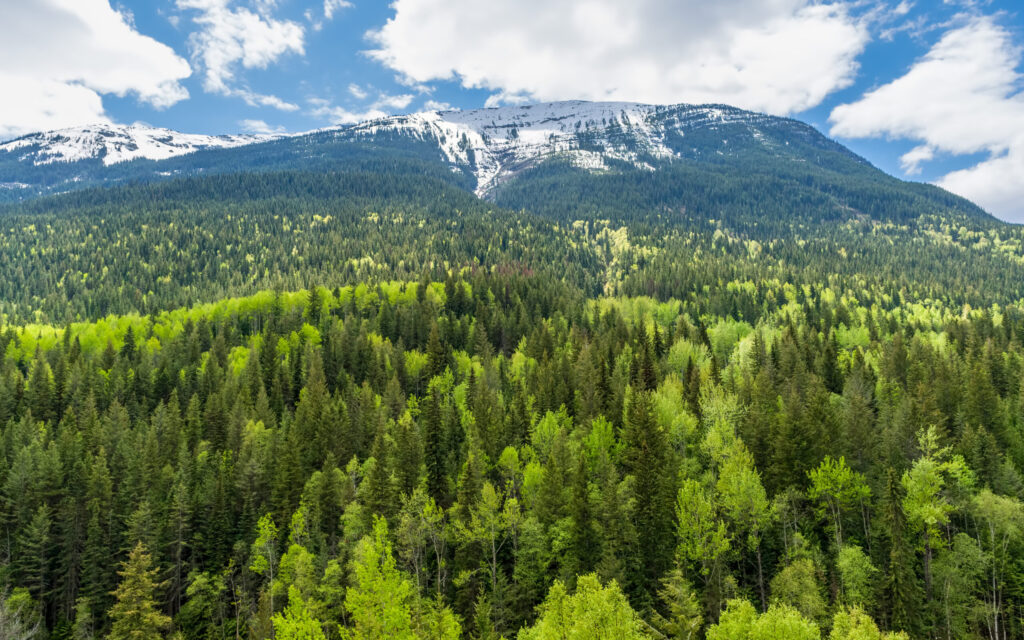- Drax does not own forests or sawmills, does not harvest forests and has no influence over this decision-making process.
- Most of the material (77% in 2023) used to produce Drax’s wood pellets in Canada comes from sawdust and other sawmill residues created when sawmills produce wood products used in construction. The remaining 23% of our fibre comes from forest residues, including low grade roundwood, tops, branches and bark.
- Canada’s forest laws are among the strictest in the world. They protect forests and ensure that sustainable forest management practices are followed across the country. Although Forest policies are set at provincial level and may vary between Provinces, they are all based on science, sustainable forest management and developed in consultation with interested parties ensuring that sustainable manage practices are followed across the country.
- The Government of British Columbia, in partnership with First Nations, has procedures, policies and laws in place to ensure sustainable forest management practices protect important forest ecosystems and support the forest products sector. It sets Annual Allowable Cut to ensure sustainable harvest levels are maintained and to support ecosystem services and disease/pest management requirements.
- Areas identified by the Government of British Columbia for harvest are carefully selected by them using an extensive list of environmental criteria.
- Biomass is the lowest value product coming from a forest harvest: it does not dictate harvest practices and only uses by-products.
Context to Canadian forests and their management
Around 94% of the forests in Canada are publicly owned and the Government of British Columbia, in partnership with First Nations, has procedures, policies and laws in place to ensure sustainable forest management practices protect important forest ecosystems and support the forest products sector.
Canada’s forests, including those in BC, are made up of varying species and age class. The climate, environment, and ecosystem across the west of Canada is unique and, in close partnership with First Nations, careful due diligence and planning is required to take care of this critical resource.
Areas identified by the Government of British Columbia for harvest are carefully selected by them using an extensive list of environmental criteria that includes but is not limited to; old growth management; landscape and site level biodiversity; age class distribution (old growth); riparian management; watershed management; wildlife management; visual quality; species at risk; rare and sensitive ecosystems; cultural heritage resources; soil quality; species diversity; site productivity; as well as social and economic considerations.
Drax’s approach to sourcing biomass from Canada
Drax can only source biomass from public forests that the Government of British Columbia and First Nations have designated as being able to be harvested by timber management companies. Drax does not own forests or sawmills, does not harvest forests and has no influence over this decision-making process.
Without having a market for the low-grade woody fibre from forests, this material may be burnt on site at sawmills or left as slash piles in the forest. This is a tactic used as part of a wider set of activities to mitigate wildfire risk and the spreading of disease/pests in Canadian forests. But it is not a good climate or economical outcome to burn forest residue in forests or at the roadside – it is far better to utilise this fibre according to strict criteria and best practice, in order to generate social value and renewable electricity.
Most of the material (77% in 2023) used to produce Drax’s wood pellets in Canada comes from sawdust and other sawmill residues created when sawmills produce wood products used in construction. The remaining 23% of our fibre comes from forest residues, including low grade roundwood, tops, branches and bark.

In the absence of a market for low grade fibre, slash, the leftover tree limbs, tops and other residues may be burnt where they are cut to reduce the risk of forest hazards. Instead, this biomass can be utilised to produce low carbon, renewable power like that generated at Drax Power Station. Image Source: Tsideldel
Related content/articles (In English only)
- Biomass overview
- Drax’s positive impact on forestry in British Columbia
https://www.youtube.com/watch?v=J-HQorFoXCY
- Evidence & Science – Including Drax’s response to “BECCS Done Well report” in 2023 and 2024
https://www.drax.com/sustainability/science-and-evidence/
- BECCS: If something’s worth doing, it’s worth doing well (Blog by Jonathan Porritt)
https://www.jonathonporritt.com/beccs-if-somethings-worth-doing-its-worth-doing-well/
- BECCS overview
